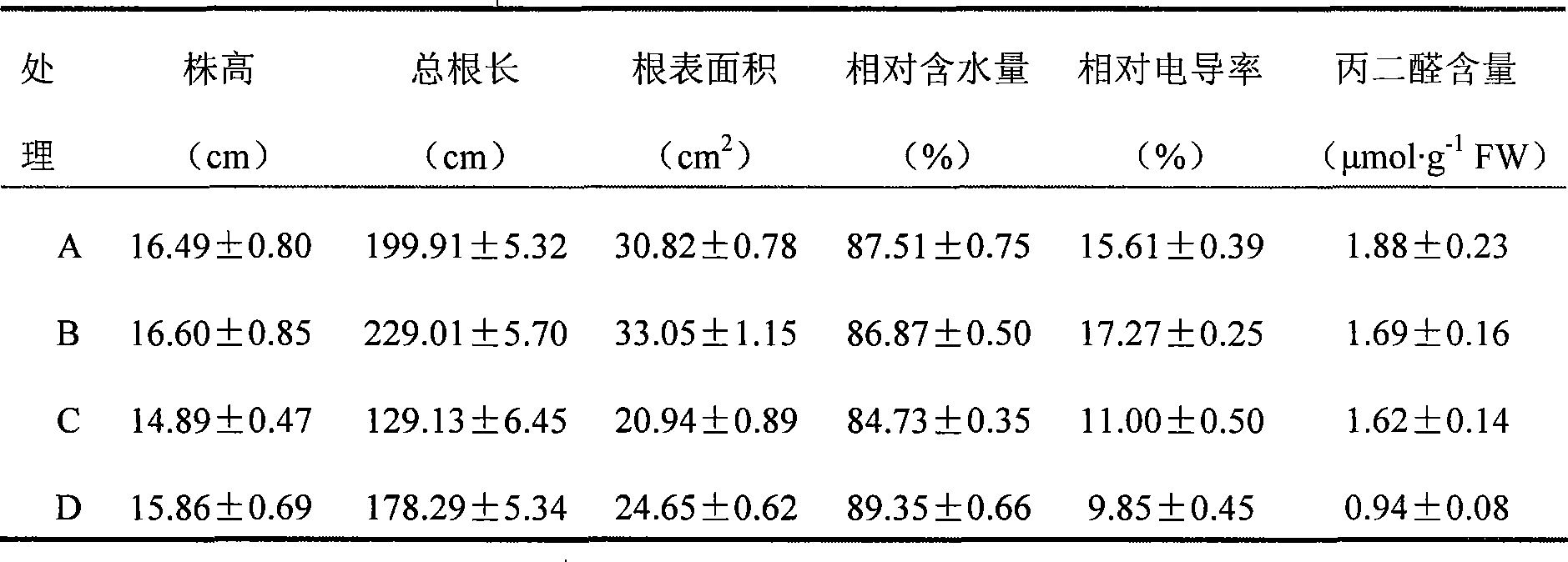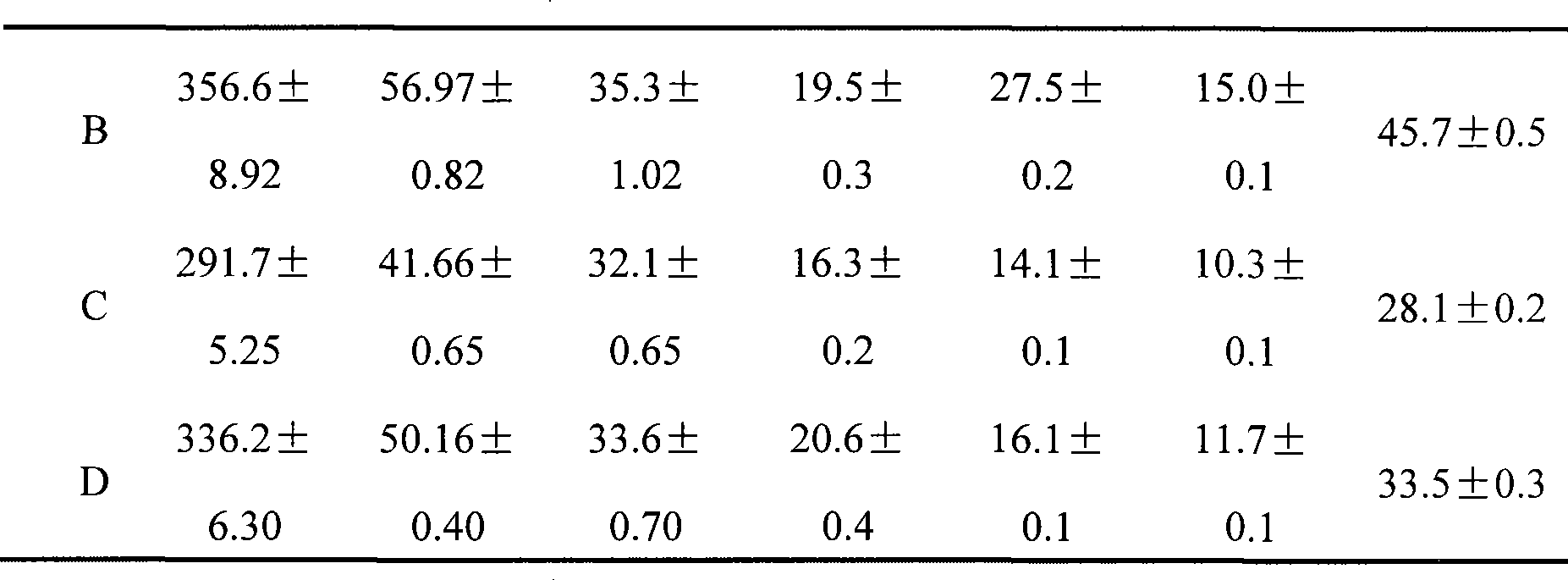New use of gamma-aminobutyric acid in increasing plant temperature-stress resistance capacity
A technology of aminobutyric acid and high temperature stress, which is applied in the field of γ-aminobutyric acid to improve the ability of plants to withstand temperature stress, can solve the problems of affecting crop production and development, wheat production reduction, and yield reduction, and achieves clear resistance to adversity, simple treatment, highly active effect
- Summary
- Abstract
- Description
- Claims
- Application Information
AI Technical Summary
Problems solved by technology
Method used
Image
Examples
Embodiment 1
[0019] Embodiment 1, GABA seed soaking improves the high temperature tolerance of wheat seedlings
[0020] 1. Experimental method
[0021] The material is wheat, and the variety is winter wheat Kyoto 40 (National Crop Germplasm Conservation Center).
[0022] Winter wheat Kyoto 40 is carried out following four kinds of treatments respectively:
[0023] A. After soaking the wheat seeds in clean water for 24 hours, cultivate them with vermiculite and sandy soil (volume ratio 7:3), and control the temperature: 25°C during the day (14 hours) and 20°C at night (10 hours). Cultivate at this temperature until C and D treatments are sampled at the same time.
[0024] B. After soaking the wheat seeds in 0.5mM GABA aqueous solution for 24 hours, cultivate them with vermiculite and sand (volume ratio 7:3), and control the temperature: 25°C during the day (14 hours) and 20°C at night (10 hours). Cultivate at this temperature until C and D treatments are sampled at the same time.
[002...
Embodiment 2
[0035] Embodiment 2, the influence of GABA treatment on wheat yield and quality under high temperature stress
[0036] 1. Experimental method
[0037]The material is wheat, the variety is Zhongyou 9507 (Institute of Crop Research, Chinese Academy of Agricultural Sciences), the test site is Shangzhuang Experimental Station, Haidian District, China Agricultural University, and the cultivation and management are carried out according to conventional methods.
[0038] The following four treatments were carried out on Zhongyou 9507:
[0039] A. Spray the leaves evenly with clean water during the flowering period.
[0040] B. During the flowering stage, the aqueous solution with a concentration of 0.01 mM GABA is used to uniformly spray the leaf surface.
[0041] C, the leaf surface is evenly sprayed with clear water during the flowering stage; the wheat filling stage (10 days after flowering-23 days after flowering) is subjected to high temperature stress treatment for 2 weeks, a...
Embodiment 3
[0049] Embodiment 3, GABA improves the low temperature stress tolerance ability of cotton seedlings
[0050] 1. Experimental method
[0051] The material is cotton, the variety is Zhongmian 45 (Cotton Research Institute, Chinese Academy of Agricultural Sciences), the seeds are soaked in water for 24 hours, and cultivated in plastic pots with flower soil and vermiculite (volume ratio: 7:3), with 4 plants per pot. The test was carried out in a light incubator, the light time was 14 hours, the day (12 hours) was 28°C, the night (12 hours) was 24°C, and the light intensity was 400μmol.m -2 .s -1 , relative humidity 66%.
[0052] 10 days after emergence, the cotton 45 was subjected to the following three treatments respectively, and the light time, intensity and relative humidity of each treatment were the same as above:
[0053] A. Spray clear water on the leaves of cotton, treat them at 20°C after 3 days, and take samples after 3 days.
[0054] B. Spray clear water on the lea...
PUM
 Login to View More
Login to View More Abstract
Description
Claims
Application Information
 Login to View More
Login to View More - R&D
- Intellectual Property
- Life Sciences
- Materials
- Tech Scout
- Unparalleled Data Quality
- Higher Quality Content
- 60% Fewer Hallucinations
Browse by: Latest US Patents, China's latest patents, Technical Efficacy Thesaurus, Application Domain, Technology Topic, Popular Technical Reports.
© 2025 PatSnap. All rights reserved.Legal|Privacy policy|Modern Slavery Act Transparency Statement|Sitemap|About US| Contact US: help@patsnap.com



